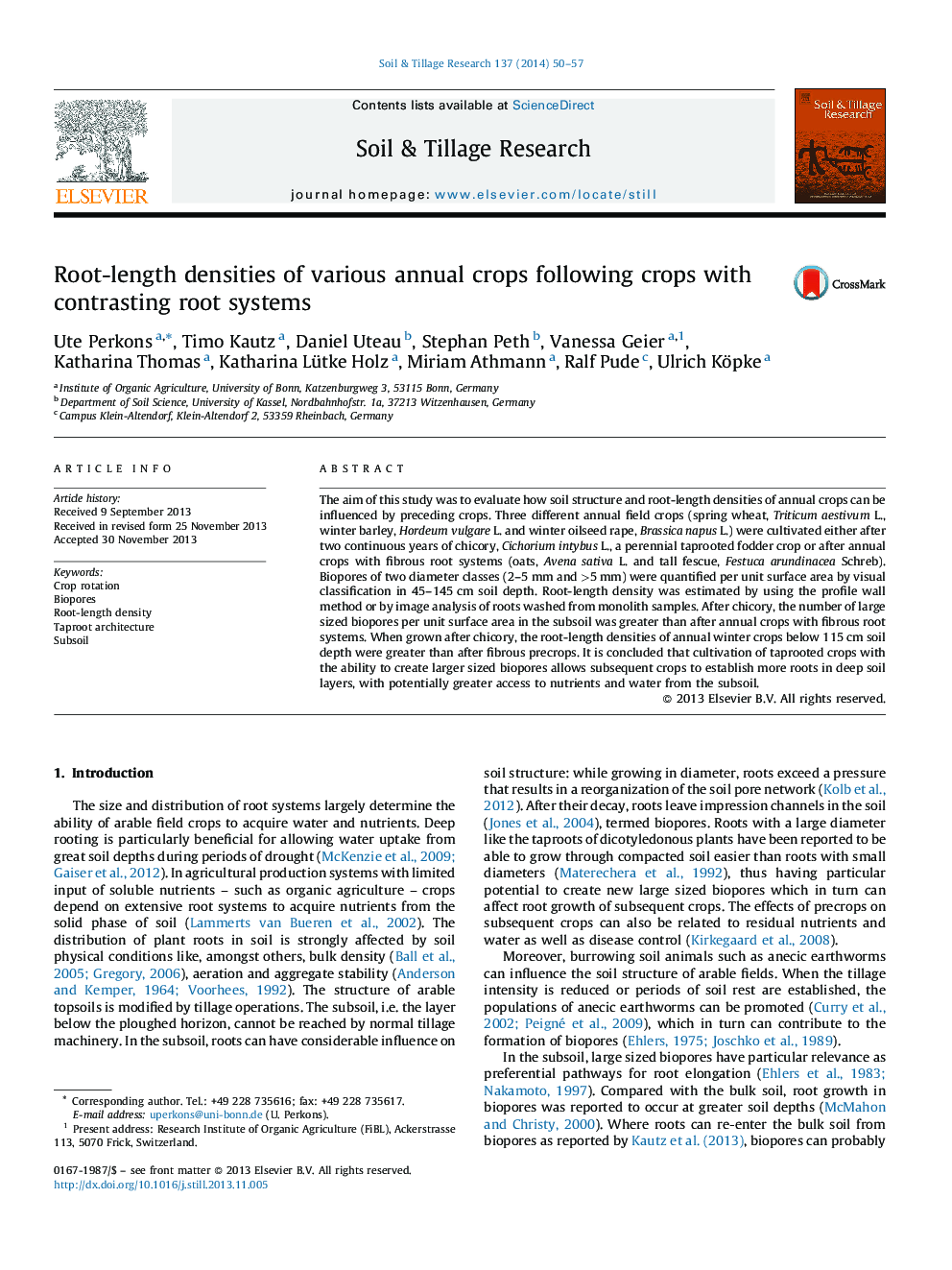| Article ID | Journal | Published Year | Pages | File Type |
|---|---|---|---|---|
| 305779 | Soil and Tillage Research | 2014 | 8 Pages |
•Crop rotation design can influence the number of large sized biopores in the subsoil.•In the deep subsoil more barley or rape roots were recorded after a taprooted crop.•About 1/5 of the roots in the subsoil were growing through large sized biopores.
The aim of this study was to evaluate how soil structure and root-length densities of annual crops can be influenced by preceding crops. Three different annual field crops (spring wheat, Triticum aestivum L., winter barley, Hordeum vulgare L. and winter oilseed rape, Brassica napus L.) were cultivated either after two continuous years of chicory, Cichorium intybus L., a perennial taprooted fodder crop or after annual crops with fibrous root systems (oats, Avena sativa L. and tall fescue, Festuca arundinacea Schreb). Biopores of two diameter classes (2–5 mm and >5 mm) were quantified per unit surface area by visual classification in 45–145 cm soil depth. Root-length density was estimated by using the profile wall method or by image analysis of roots washed from monolith samples. After chicory, the number of large sized biopores per unit surface area in the subsoil was greater than after annual crops with fibrous root systems. When grown after chicory, the root-length densities of annual winter crops below 115 cm soil depth were greater than after fibrous precrops. It is concluded that cultivation of taprooted crops with the ability to create larger sized biopores allows subsequent crops to establish more roots in deep soil layers, with potentially greater access to nutrients and water from the subsoil.
